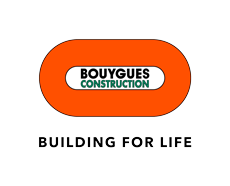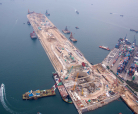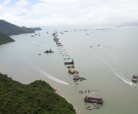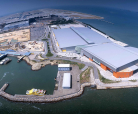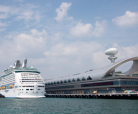Dragages Hong Kong: 60 years in the vibrant city
1950's : first steps in Hong Kong
End of the war, establishment of the People’s Republic of China and mass influx of immigrants bringing labour to the city, the 1950s were a period of big change. Coupled with ambitious infrastructure plans and investment-friendly policies, Hong Kong laid the foundations that were to create one of the world’s greatest tradings hubs. In 1955, Dragages moved in the city for its first project : the reconstruction and extension of Kai Tak airport runaway.
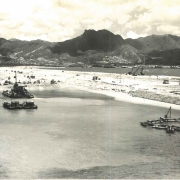 |
Kai Tak Airport Runway, 1955-1958 |
1960's: combatting severe droughts
Surge in manufacturing capabilities, rising GDP per capital and improving standards of living, the 1960s were a turning point for Hong Kong. However, droughts in 1963 and 1967, coupled with rising population severely affected the territories’ water supply. During harsher periods, water supply was restrictied to four hours a day over four days.
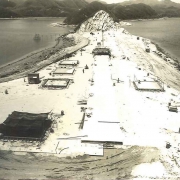 |
Plover Cove Reservoir, 1964-1968 |
1970's: connecting the city
In the 1970s, land prices were on the rise and economic policies introduced in China allowed companies to move manufacturing facilities to lower cost cities across the border. Real estate and investment became the new buzz words. Major infrastructure projects centered on improving transportation networks, opening up new areas for residential, commercial and industrial developments, shaping the bustling Hong Kong we know today.
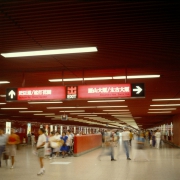 |
Admiralty and Central MTR Stations, 1976-1982 |
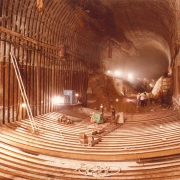 |
Aberdeen Tunnel, 1977-1981 |
1980's: a booming decade
The 1980s saw Hong Kong rise to global prominence based on its reputation for international trade and sky-rocketing real estate deals. Commercial success prompted a construction boom, with heavy investment and new civil and building developments. International firms flooded into the city, attracted by “laissez-faire” economic policies and low tax regime.
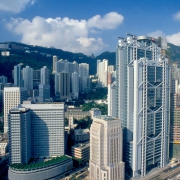 |
HSBC Main Building, 1982-1985 |
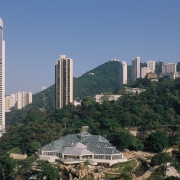 |
Hong Kong Park, 1988-1992 |
1990's : putting Hong Kong on the global map
After the transfer of Hong Kong’s sovereignty to China, the 1990s was still a period of big projects for the city and for Dragages Hong Kong. Heavily involved in the works associated with the new airport development and the linking of the central districts to the New Territories, Dragages was equally busy in building schools, residential, sporting and leisure facilities, all improving the daily lives of Hongkongers and the city’s environment.
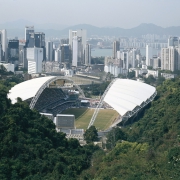 |
Hong Kong Stadium Redevelopment, 1992-1994 |
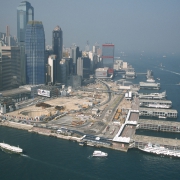 |
Central Reclamation - Phase 1, 1993-1997 |
2000's: challenges and opportunities
At the turn of the millenium, Hong Kong suffered from the economic fall-out of the late 1990s, but the city’s strong fundamentals saw it recover faster than its Asian neigbours. Hong Kong’s economic links with China continued to drive the economy, with companies increasingly exporting products and services to the Mainland through the Hong Kong hub.
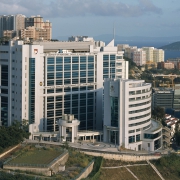 |
The University of Hong Kong - Faculty of Medicine, 1999-2001 |
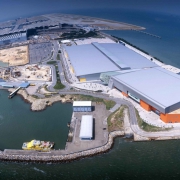 |
AsiaWorld-Expo, 2003-2005 |
2010's : going on shaping a better life
In the 2010s, Dragages Hong Kong’s developments elevated to the next level. If its mission is more than ever to shape a better life, building large and complex infrastructures that connect people and the city, the scale of its projects has significantly expanded. Thanks to innovation and high added-value solutions, it now manages world record-breaking infrastructures, such as the Hong Kong-Zhuhai-Macao Bridge – Hong Kong Link Road (the longest span - 42km) and the Tuen Mun-Chek Lap Kok Link sub-sea tunnel (the deepest - 50m). All these contribute to Hong Kong’s status as one of the world’s leading cities and enhance people’s livelihood.
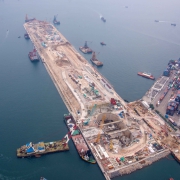 |
Tuen Mun-Chek Lap Kok Link, sub-sea tunnel, in progress |
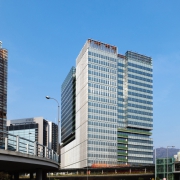 |
Trade and Industry Tower, in progress |
